Destination-Drive Winner Southern Spice Restaurant in Lawndale
(Gerry Furth-Sides) Southern Spice Restaurant, although right off the 405, may be a little off the beaten restaurant path but certainly worth the drive for the Southern Indian food alone. Add to that the “southern hospitality” with an owner always on site to welcome you, a chef to explain the dishes in detail, and makes it the best of authentic, generously portioned southern Indian cuisine in Southern California.
Southern Indian food is known for its aroma and rich taste. Like many other food enthusiasts, Sakti has his own personal favorites with a story to go along with them. 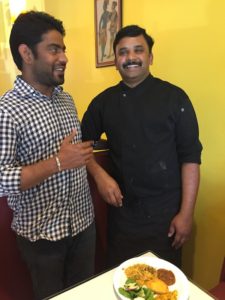
Indian food is extremely regional; India itself was occupied by different peoples. Although Pakistan and Bangladesh were a political part of the country before 1948, their climates and culture are more influential in ingredients and customs. For example, Southern Indian cooking is based around rice, lentils, and stews. Dishes such as the wonderful crispy, crepe-like dosa, a star at Southern Spice, are made of lentils and rice. Idli, steamed lentil rice cakes, are as much fun to eat and are a sort of savory donut. They are wonderful dipped in hull/sambar, a spicy lentil and vegetable stew. Saaru/rasam is a soup made of tomato, tamarind, and lentil.
Solanum torvum is a bushy, erect and spiny perennial plant used horticulturally as a rootstock for eggplant. Grafted plants are very vigorous and tolerate diseases affecting the root system, thus allowing the crop to continue for a second year.
Important spice mixtures and powder mixtures include the often-used Huli pudi (sambar powder). In the more tropical, warmer climate, the southern Indian cook uses tamarind as a tart ingredient. Dried herbs, such as curry leaves, are used in soups. And in the south, chicory coffee is popular, rather than tea at the end of a meal.
Vada, savory little flat cakes, are eaten for breakfast. The spongy cakes are equally as satisfying as savory snacks. They are eaten for every meal and snack by Indian college students. Idly are prepared from a rice and urad batter, poured into molds and steamed. Idly soaked in sambar lends the little cakes a completely different taste by infusing them with an earthy, hearty, subtle flavor. Sambar is a stewed dish made with toovar (pigeon pea) dal, tamarind, vegetables, and spices.
The Rava Dosa crepe adds an unexpected texture to its western counterpart. The crepes, shown above, actually precede the western favorite by centuries. They are as delicious and fun to eat as they look.
Thalapakatti-Style Mutton Biryani
Other specialties of the day may include Vijayawada chicken biryani, a specialty of this area of the country. The dish consists of boneless cubes of chicken and basmati rice cooked with ground spices.
Chettinadu Goat Biryani Chettinadu follows the order of the Tamil Nadu region. The specialty of this region’s dishes, lies in the freshly ground spices used to prepare them. One-pot Chettinadu Biryani is popular because it is spicy and somewhat tangy. The blend of spices includes fennel, cinnamon, red chilli powder and tamarind. This Chettinadu Biryani dish is unusual because the whole spices are cooked and then ground into a paste.
Prominent dishes in the North include much of what you eat in restaurants in the West—such as naan bread, rotis and samosas, curries such as palak paneer (spinach and cheese) and aloo gobi. Spice mixture and powder are used, including the famous medley of garam masala. Sour or tartness is a prevalent flavor in Indian food. Amchoor (dried mango powder) is used as a souring agent in curries. In the North, some sauces are accented with the use of dried herbs, such as fenugreek leaves. In the North, you finish a meal off with tea or chai.


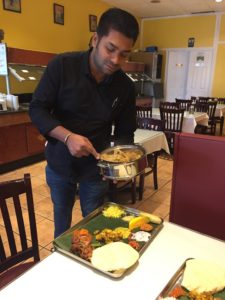
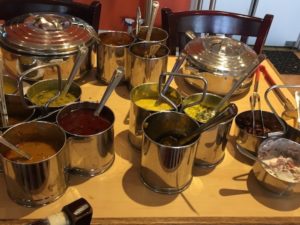
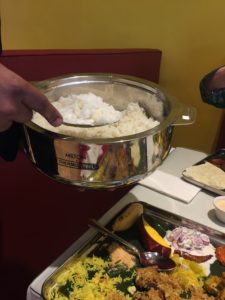


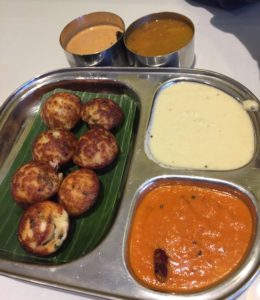
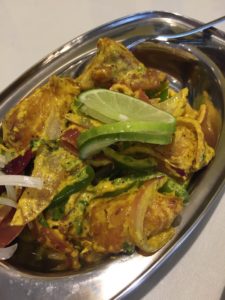
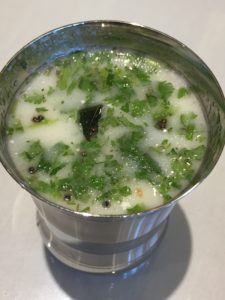

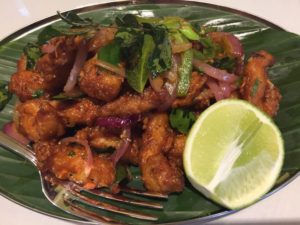
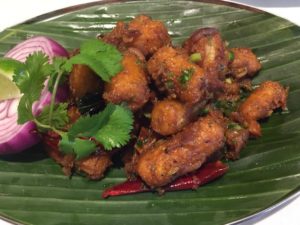
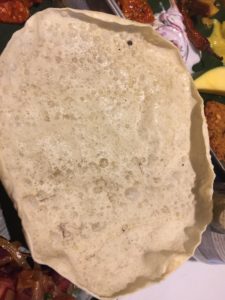

 Gerry Furth-Sides
Gerry Furth-Sides  Barbara Hansen
Barbara Hansen  Chef-owner Alain Cohen
Chef-owner Alain Cohen  Roberta Deen
Roberta Deen  Jose Martinez
Jose Martinez  Nivedita Basu
Nivedita Basu